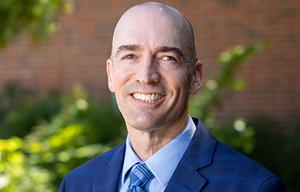
Education
Ray Carter | May 6, 2019
Tax-credit program helping rural students
Ray Carter
A state tax-credit program, derided by union activists, is helping increase educational opportunity in rural public schools.
Roger Gerstenberger, chief outreach officer for TEL Library, said schools are being offered “an incredible financial deal and opportunity for students to start earning college credits.”
TEL Library, a non-profit organization, provides dual-credit opportunities to smaller schools via online delivery, allowing high-school students to earn college credit before they graduate. The three-hour courses are offered at a cost of $75 per student, per course. The only other fee associated with the courses is for transcription.
Oklahoma law provides a tax credit to individuals or businesses who contribute money to organizations that fund public-school programs ranging from band to science activities. The Pawhuska school district, located in the northern portion of Osage County, took advantage of the tax-credit program to raise money to cover the cost of dual-enrollment programs. As a result, no students at the school are out-of-pocket any amount of money when they take a course through TEL.
Even today, Gerstenberger said a sizable number of students in many rural districts would be “first-generation college attendees.”
“That’s a big hurdle for students, sometimes, to jump over,” Gerstenberger said. “Nobody in the family has done it. They’ve grown up in a very rural community, the thought of stepping into some big school somewhere away from home—there’s a lot of obstacles to overcome. Can I handle the curriculum? Am I smart enough to go to college? Those types of things. This type of program really helps reduce those barriers to entry because they’re experiencing true college-level courses and the rigor of that, but they have the safety of their own environment. They have the support of the faculty that’s there, encouraging them, bringing them along.”
By completing the dual-credit courses, Gerstenberger said students increase their confidence so they realize, “I can achieve. I can perform at this level.”
TEL offers several courses, including quantitative analysis, biology, and communications, and plans to expand its offerings to include things like psychology, microeconomics, algebra, and chemistry.
Pawhuska offered a pilot program this spring and between 30 and 40 students participated, Gerstenberger said. That represents a substantial share of juniors and seniors at the school. The entire Pawhuska district has just under 700 students in all grades from pre-K to 12, according to Oklahoma Department of Education records.
TEL has reached out to rural districts across Oklahoma and 16 rural districts recently participated in a webinar to learn more about the program. Pawhuska is the first school to use the tax-credit program to cover costs, but other schools are now exploring that option, Gerstenberger said.
However, a cap on the tax-credit program limits its reach. Legislation was filed this year to raise the cap so $15 million in tax-credits could be provided to projects like the Pawhuska program. It’s estimated the legislation could inject up to $27 million in private funding into traditional public schools.
However, the Oklahoma Education Association opposed that legislation, in part because the tax-credit program also provides a tax break to those who donate to scholarship-granting organizations that help low-income children and those with special needs attend private schools.
The OEA dismissed the proposal’s multi-million benefit to public schools because of their opposition to the scholarship program for poor children. In one tweet, OEA officials declared the legislation would “give away money to the super wealthy at the expense of Oklahoma children.”
Yet the benefit for districts like Pawhuska is substantial, Gerstenberger said.
“Rural districts are really struggling with this,” Gerstenberger said. “These students don’t have equal opportunities to dual-credit, concurrent type of programs. They’re 60 miles away from the closest community college. Rural districts are having a really hard time recruiting teachers and faculty who can teach those upper-level courses, so students are struggling in that. We can provide that.”

Ray Carter
Director, Center for Independent Journalism
Ray Carter is the director of OCPA’s Center for Independent Journalism. He has two decades of experience in journalism and communications. He previously served as senior Capitol reporter for The Journal Record, media director for the Oklahoma House of Representatives, and chief editorial writer at The Oklahoman. As a reporter for The Journal Record, Carter received 12 Carl Rogan Awards in four years—including awards for investigative reporting, general news reporting, feature writing, spot news reporting, business reporting, and sports reporting. While at The Oklahoman, he was the recipient of several awards, including first place in the editorial writing category of the Associated Press/Oklahoma News Executives Carl Rogan Memorial News Excellence Competition for an editorial on the history of racism in the Oklahoma legislature.